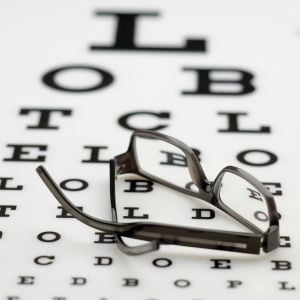Stacy’s first child was born with snow white hair even though she and her husband were both dark-haired. The doctor indicated he would order tests to find out the cause. The shocked parents were surprised to learn that there were a number of types of albinism.
Overview of Albinism
The National Organization for Albinism and Hypopigmentation (NOAH) defines albinism as a group of conditions that are inherited. An individual classified as an albino has very little and sometimes no pigment in his hair, skin or eyes.
The cause of albinism is genes altered through inheritance so that the body produces a shortage of the pigment melanin. The disorder strikes about 1 in 17,000 individuals in the United States. Most individuals with albinism have blue eyes, though a reddish or violet shade occurs in some.
According to MedlinePlus, anyone born with albinism has at least one of several symptoms. They include the absence of color in the hair, skin or iris of the eye or having skin and hair that are lighter than normal. Another sign is skin that looks patchy due to missing pigmentation.
Most individuals with albinism have vision problems. The most common are crossed eyes (strabismus), a sensitivity to light (photophobia) and rapid eye movements (nystagmus). Some have problems severe enough to make them functionally blind.
Types of Albinism
The Mayo Clinic indicates that experts classify the types of albinism for the most part according to which gene mutated to cause the condition. Each type has some unique characteristics.
Oculocutaneous albinism. A mutation in one of four specific genes is the cause. This type is characterized by visual symptoms as well as those linked to skin, hair and eye color.
Oculocutaneous albinism 1. It’s been traced to a mutated gene on chromosome 11. Individuals are usually born with white hair, blue eyes and white skin. Although some eventually produce enough melanin for medium blond or brown hair, others never do. Eye color sometimes changes. While skin might tan, it typically doesn’t change color.
Oculocutaneous albinism 2. Amutated gene on Chromosome 15 is the culprit.This type of albinism is most common in Sub-Saharan Africans and African-Americans. At birth, the individual’s skin is white to light brown, depending upon descent. Eye color is typically blue-gay or tan, while hair might be yellow, red, ginger or auburn. For individuals of Asian or Northern European descent, the skin color resembles that of other family members but is slightly lighter. Once exposed to sunlight, these individuals can develop freckles, moles or other skin markings.
Oculocutaneous albinism 3. This variety occurs mainly in black South Africans. Afflicted individuals have reddish-brown skin, reddish or ginger hair and brown or hazel eyes. This gene mutation tracks to chromosome 9.
Oculocutaneous albinism 4. The symptoms of this type are the most similar to those associated with type 2. Although a rare type of albinism, it’s one of the most common forms among those of Japanese ancestry. Its cause is a gene mutation on chromosome 5.
X-linked ocular albinism. Found nearly exclusively in male patients, this type involves a gene mutation on the X chromosome. While the individual’s skin, eyes and hair and usually within a normal color range, developmental and visual problems are typical.
Hermansky-Pudlak syndrome. Experts believe this rare form is associated with one of seven or more mutated genes. In addition to symptoms common to oculocutaneous albinism, these patients have lung and bowel diseases and a bleeding disorder.
Chediak-Higashi syndrome. This type traces to a genetic mutation on chromosome 1. It’s also rare, with symptoms similar to those in patients with oculocutaneous albinism. Skin color ranges from a creamy white to a gray tone. Hair is typically brown or blond with a silver tone. Patients suffer from a defect in their white blood cells that makes them unusually susceptible to infections.
Because all the types of albinism are the result of a genetic disorder, treatment always focuses on controlling symptoms. Affected individuals must take care to protect their skin from the sun and wear corrective lenses for vision problems.
Sources:
http://www.albinism.org/publications/What_is_albinism.html
http://www.nlm.nih.gov/medlineplus/ency/article/001479.htm
http://www.mayoclinic.com/health/albinism/DS00941




